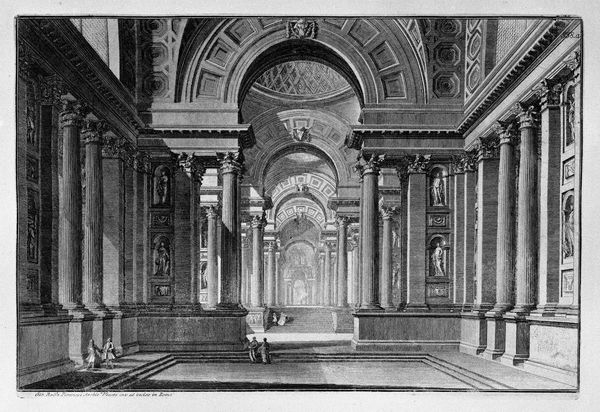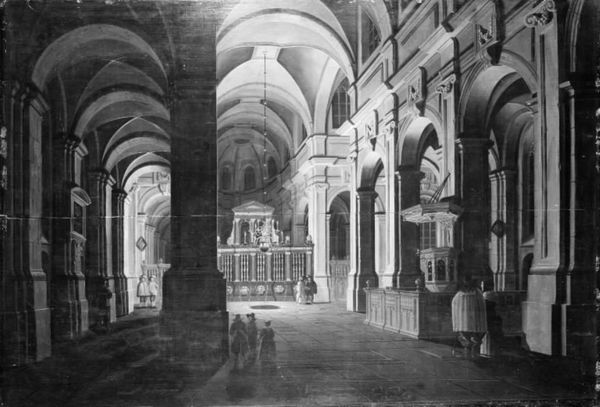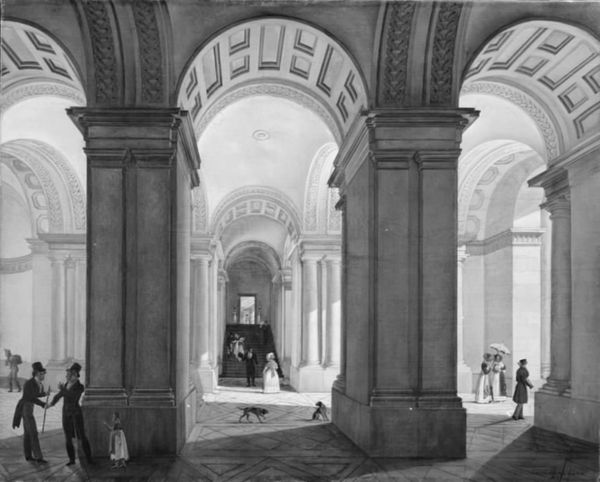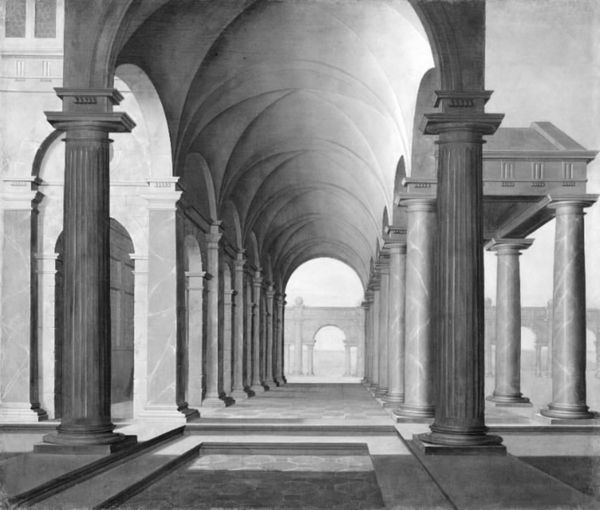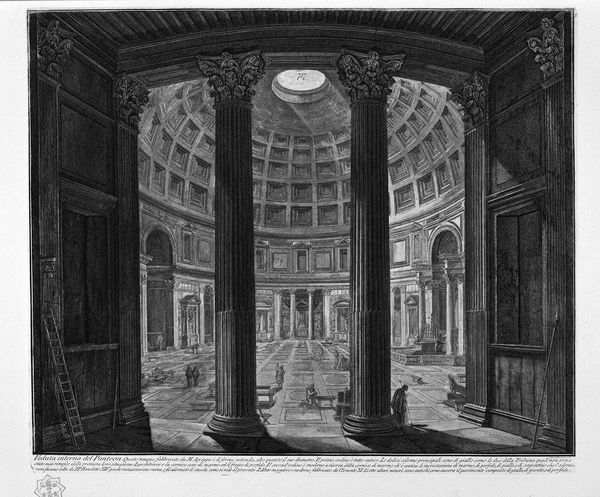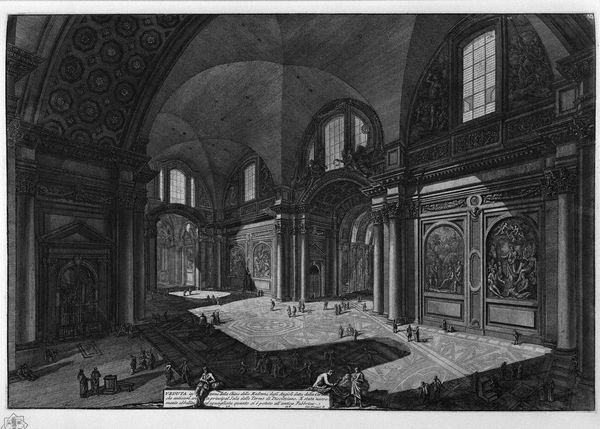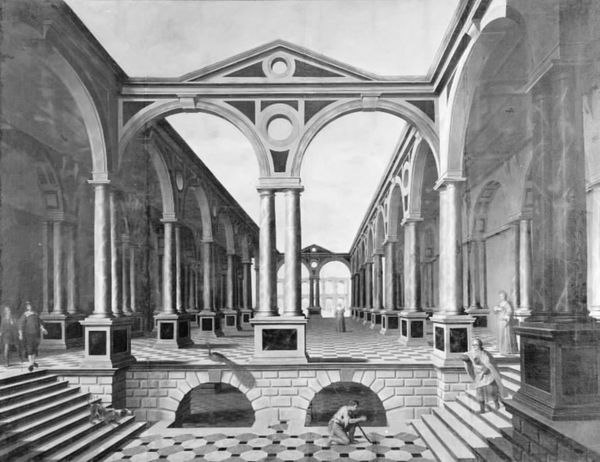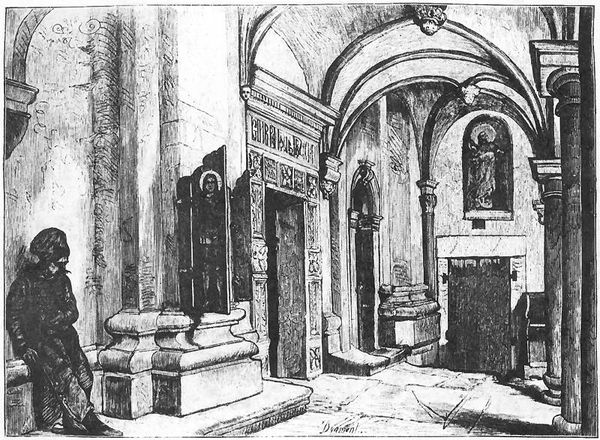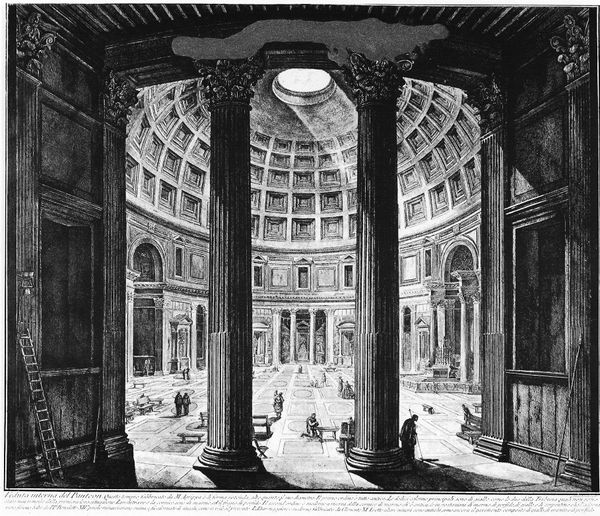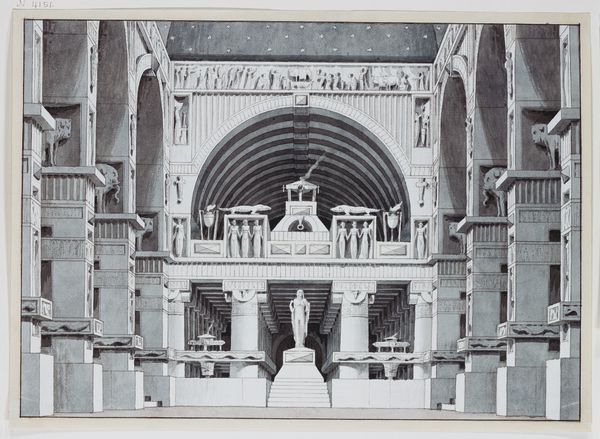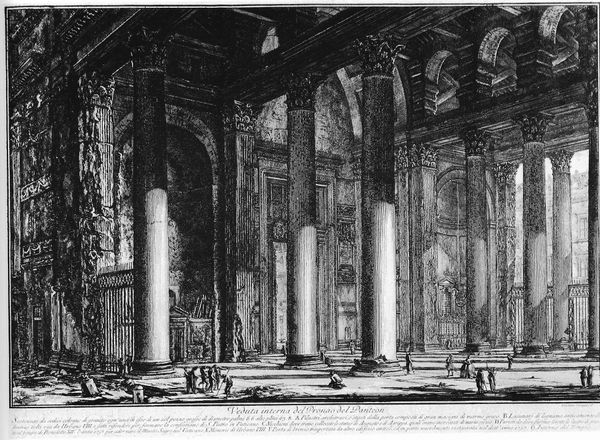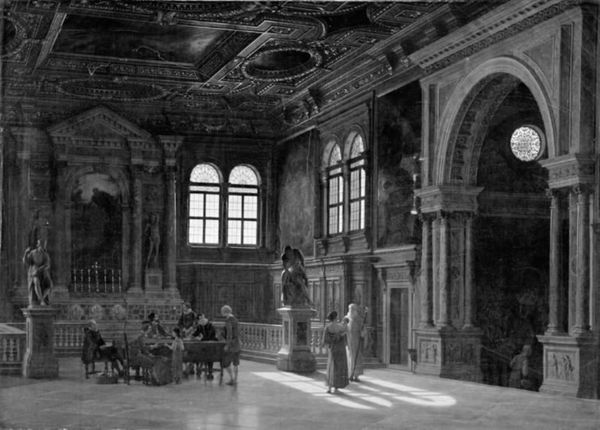
painting, oil-paint, wood, architecture
#
baroque
#
painting
#
structure
#
stone
#
oil-paint
#
sculpture
#
perspective
#
historic architecture
#
form
#
line
#
wood
#
history-painting
#
architecture
#
historical building
#
statue
Dimensions: 40 cm (height) x 53.5 cm (width) (Netto)
Hans Jurriaensz van Baden painted this interior of a church, rendered in oil, during the 17th century. The architecture, punctuated by stoic columns, speaks to the enduring influence of classical antiquity. Consider the columns: their form harkens back to ancient Greece and Rome, where they were not merely structural but symbolic, representing stability and order. We see them echoed in the Renaissance, a testament to the cyclical nature of cultural memory. The motif transcends mere architectural function, and becomes a conduit for humanity’s perennial search for order and reason. The very act of erecting these towering columns taps into a primal urge to reach the heavens, reflecting a deep-seated desire for connection to the divine. The architectural motifs engage viewers on a subconscious level, stirring feelings of awe and reverence, and perhaps even a touch of the sublime. Such emotional and psychological echoes through art history reveal the potent force of images to engage viewers on a subconscious level. The cyclical progression of symbols like the columns and arches, and how they resurface, evolve, and take on new meanings in different historical contexts is revealing.
Comments
No comments
Be the first to comment and join the conversation on the ultimate creative platform.

